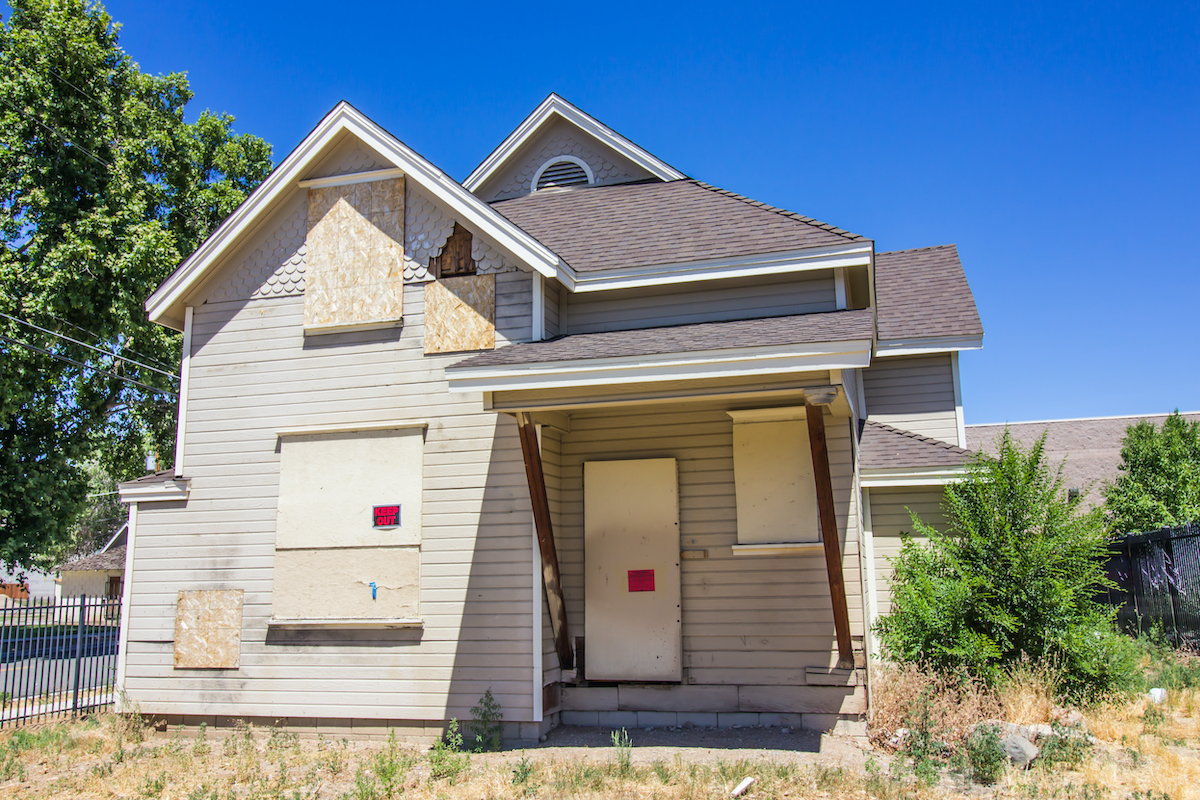When we look at claims information, we see that many of the properties subject to break-ins, thefts, and vandalism are usually vacant or going through renovations. It’s truly disappointing to arrive to show a house and see it broken into and missing key components like stoves, ovens, air conditioning, the furnace, water heater, and even copper plumbing and electrical wiring. Your investor client is then forced to deal with police reports and must invest even more time and money to restore the property. Share these ways to protect vacant and renovation properties with your investors to mitigate loss.
Who are the “usual suspects” for break-ins?
- Neighborhood kids looking to make the vacant property their “clubhouse”.
- Professional thieves looking to take possessions and turn them into their gain.
- Contractors or their sub-contractors return to the property they have worked on, knowing what’s inside the house.
How Can Investors Protect Their Valuable Investments?
The first line of defense: Deterrence
For homes that have been vacant for a while, chances are there may be other vacant homes in the same neighborhood. Make sure the house is not the easiest target on the block. Investors will want to lead thieves and vandals to believe the house is being lived in or at least being watched.
Locks & Door Reinforcement
Properly secure the property. Doors and windows should be locked with sturdy hardware. If your investor client is purchasing the property or taking possession back from a tenant, they should change the locks or get them re-keyed. Who knows how many copies of keys could be floating around? Even with good locks, doors can still be kicked in. Your investor clients may consider reinforcing exterior doors to keep the bad guys out. Adding metal door jamb shields and hinge shields can make a world of difference. Securing basement windows is also critical as this often provides an easy access point to the house and to expensive housing components like water heaters, the furnace, pipes, and wiring.
Neighbors
Getting to know the neighbors can be a big benefit. Investors should discuss the plans for the home with their neighbors, as they can be eyes and ears around the investment property. They should have contact information for the property owner if they see anything suspicious.
Inspections
Your investor clients should drive by regularly and make sure the house is still secure. It may also provide a good opportunity to wave at the neighbors or get out and talk to them to build that relationship. If the house has been broken into, the investor client should call the police and not enter the house until an officer arrives. The intruder may still be inside!
Yard Maintenance
Your investor clients should maintain the outside appearance of the house, keeping the yard cut and clean and trimming back trees and shrubs that may block views of the house and provide thieves places to hide. It is important to keep the mailbox from filling up with mail. Newspapers stacking up on the lawn and mail flowing out of the mailbox is an indicator to a thief that nobody is at home. Even if bills have stopped going to the house or the past residents have redirected their mail, junk mail will fill up a mailbox fast.
Lighting
A well-lit exterior will discourage thieves from approaching the house at night. Lights should be placed at a height where it’s not easy to disable them and consider using motion detector lights that instantly light up an area, startling a would-be thief. Lighting the inside of the house is critical too. Using lights on timers in various rooms and radios that come on and go off in the evening may make a vacant home look and sound occupied, dissuading potential thieves and vandals. There’s a product out now that looks like a light bulb – it records usage and replicates patterns at night gradually turning out lights downstairs and ending with turning out an upstairs light like a resident would when going to bed. These lights can also be set up to turn on if the doorbell were to ring, imitating a household being startled awake by a late-night visitor.
Board-up
When appropriate and required, the property should be boarded up. There are several board-up solutions. The easiest fix might be to send over a handyperson with plywood and long screws, but there are also cage systems, steel shields held in place by special hardware, and even a heavy-duty Plexiglas-type product that allows light in the house. It doesn’t make the house appear boarded up but is strong enough to keep thieves and vandals out. Your investor clients should use the best method available that is also compliant with local codes. They should also keep in mind, that insurance policies will often require that vacant houses be boarded up as a security measure.
Alarm Systems
Posting a sign on the front window or in the yard indicating an alarm is monitoring the house is a great deterrent. Having an alarm is better, and it is recommended to purchase the best system for the property. Some alarm systems and components can be purchased for a few hundred dollars and there are a ton of choices. We found several portable systems that can be moved to another property once a vacant property is rented or from renovation to renovation as a property is being flipped. Your investor clients will want a flexible system, that does not require Wi-Fi, and monitoring is set up monthly.
Wrap Up
To best protect an investment, layer the security. If a security system is created that consists of the 8 components we addressed today, theft and vandalism will be well on their way down the block. These types of losses at vacant or renovation properties aren’t inevitable; it just takes some effort and consistent monitoring to protect a valuable investment. For more ways to protect vacant properties read: Protect Vacant Properties From Water Damage This Winter.





